本期为大家推介的内容为文章《基于百度慧眼的中国收缩城市分类研究》(Classification of shrinking cities in China using Baidu big data),发表在《ACTA GEOGRAPHICA SINICA》(地理学报),欢迎大家学习与交流。
收缩城市是快速城市化过程中不可忽视的一类城市,按照城市人口变化格局,开展收缩城市分类研究,是发现城市人口“空洞”及变化特征的重要一环。国际上将收缩城市主要分为穿孔型、圈饼型和边缘型,中国的收缩城市究竟包括哪些类型?尚缺少研究证实。本文以中国实体城市为分析单位,利用百度慧眼2016年11月─2018年11月200 m格网的常住人口数据,发现常住人口减少的实体城市共1506座,占实体城市总量(3022座)的49.8%。选取人口较为密集且在研究时段内出现严重收缩现象的126座收缩城市为研究样本,探讨中国收缩城市分类问题。分析表明:126座收缩城市样本多分布在秦岭淮河一线以北地区,包括穿孔型、全局型、局部型、圈饼型、边缘型等5种类型。其中,穿孔型收缩城市最多,共47座(37.3%),为中国收缩城市的主导类型,主要分布于黑龙江、内蒙古、甘肃;全局型收缩城市有33座(26.2%),主要分布于甘肃、陕西;局部型收缩城市有25座(19.8%),主要分布在黑龙江、内蒙古;圈饼型收缩城市有18座(14.3%),主要分布在内蒙古;边缘型收缩城市有3座。“重速度、轻质量”的前半程城镇化,以“增长”为主导的城市规划执念,资源枯竭或经济转型导致传统工业企业衰落解体,政府主动调整下的产业转移等是产生穿孔型收缩城市的主因。研究为政府精细调整城市发展重心、优化土地利用结构、提高城市宜居性、开展收缩语境下的城市规划与设计,提供了科学依据。
论文相关
About this Paper

题目:《基于百度慧眼的中国收缩城市分类研究》
(Classification of shrinking cities in China using Baidu big data)
作者:孟祥凤,马 爽,项雯怡,阚长城,吴 康,龙 瀛
发表刊物:《ACTA GEOGRAPHICA SINICA》(地理学报)
DOI:10.11821/dlxb202110010
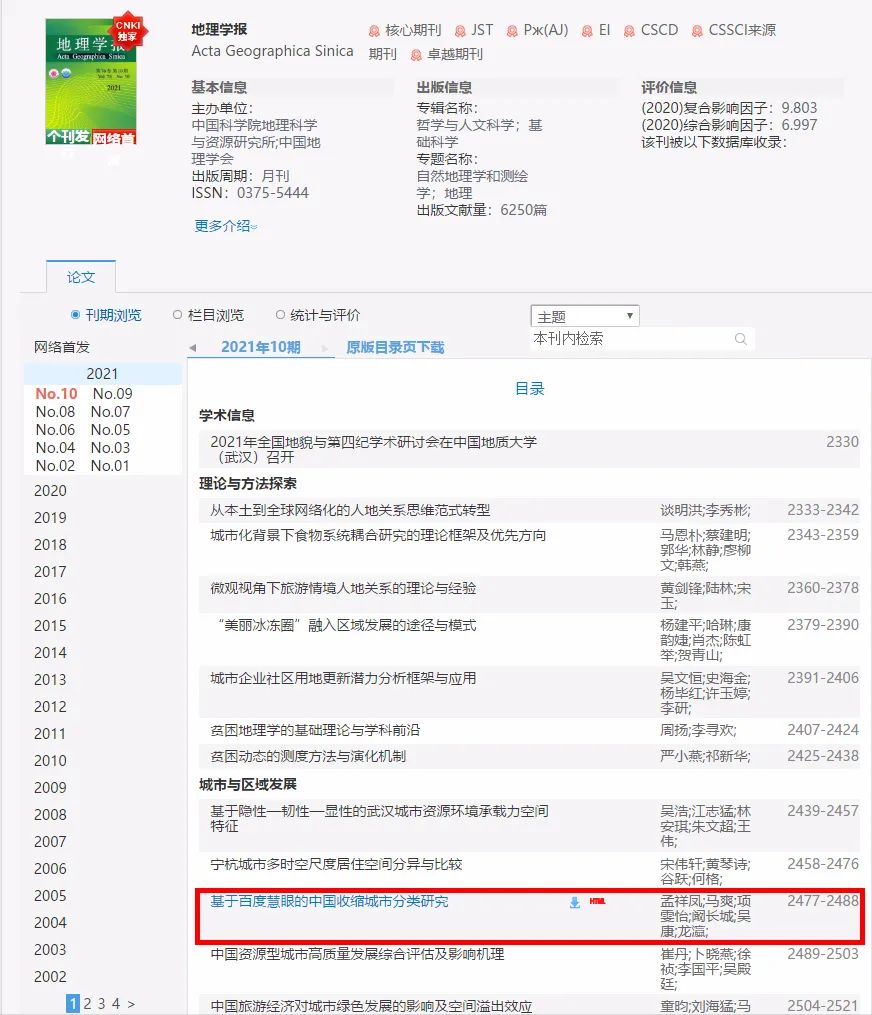
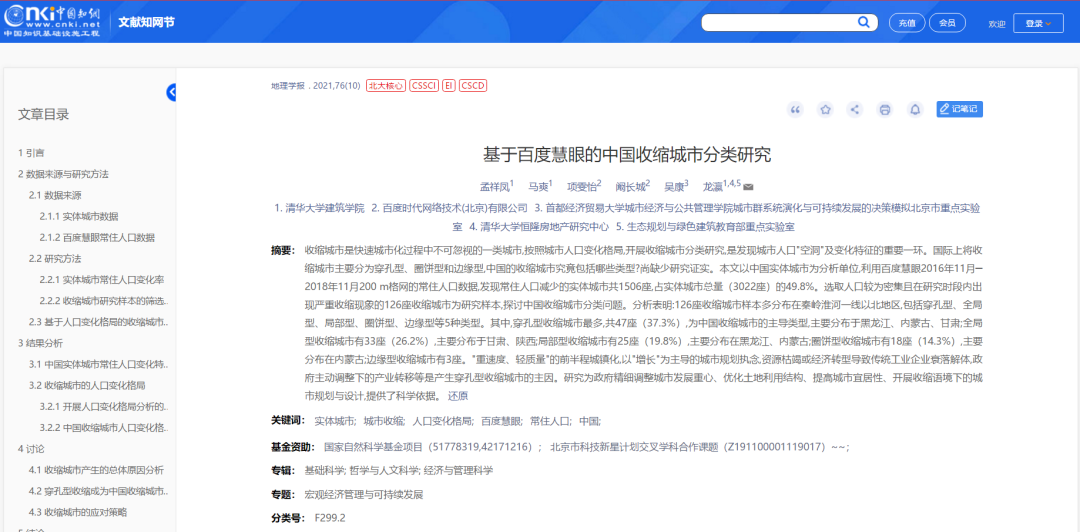
摘要ABSTRACT
In the context of rapid urbanization, shrinking cities cannot be ignored. The classification of shrinking cities according to the patterns of urban population changes is the key to reveal the “hollow” and changing characteristics of the population. Researchers classified the shrinking cities in Western developed countries as “perforated”, “doughnut” and “peripheral” types. However, there is a lack of evidence showing the types of shrinking cities in China. This paper takes the redefined physical cities in China (excluding Hong Kong, Macao and Taiwan) as the study area, and employs Baidu Huiyan’s 200 m × 200 m grid cell permanent population data from November 2016 to November 2018 to identify different types of shrinking cities in the country. Our results show that 1506 physical cities have experienced a population reduction between 2016 and 2018, accounting for 49.8% of the total number of physical cities (3022). Furthermore, in order to accurately identify the types of shrinking cities, 126 densely populated and severely shrinking cities during the study period were selected as the research samples, mainly located to north of the Qinling Mountains and Huaihe River of China. Our analysis shows that the shrinking types of the sample cities can be classified into five categories: “perforated”, “complete”, “local”, “doughnut”, and “peripheral”. The number of cities with perforated shrinkage is the largest, which numbered 47 (37.3% of the sample cities), most of which are found in Heilongjiang Province, Inner Mongolia Autonomous Region and Gansu Province. Complete shrinkage ranks the second, including 33 cities, which accounts for 26.2% of the samples, and mainly distributed in Gansu and Shaanxi provinces. The numbers of shrinking cities with local, doughnut and peripheral types are 25, 18 and 3, respectively. These cities are mainly distributed in Heilongjiang and Inner Mongolia. This is because the governments paid more attention to the development speed over quality during the first half of China’s urbanization process, and adopted a growth- oriented urban planning strategy. Traditional industries declined due to resource depletion or economic transformation, and the transfer of industries under active government adjustment, all of which contribute to the emergence of perforated shrinkage. This study could provide scientific evidence for micro management of urban development, optimization of land use pattern, improvement of urban livability, and conduct of urban planning and design in the context of urban shrinkage.

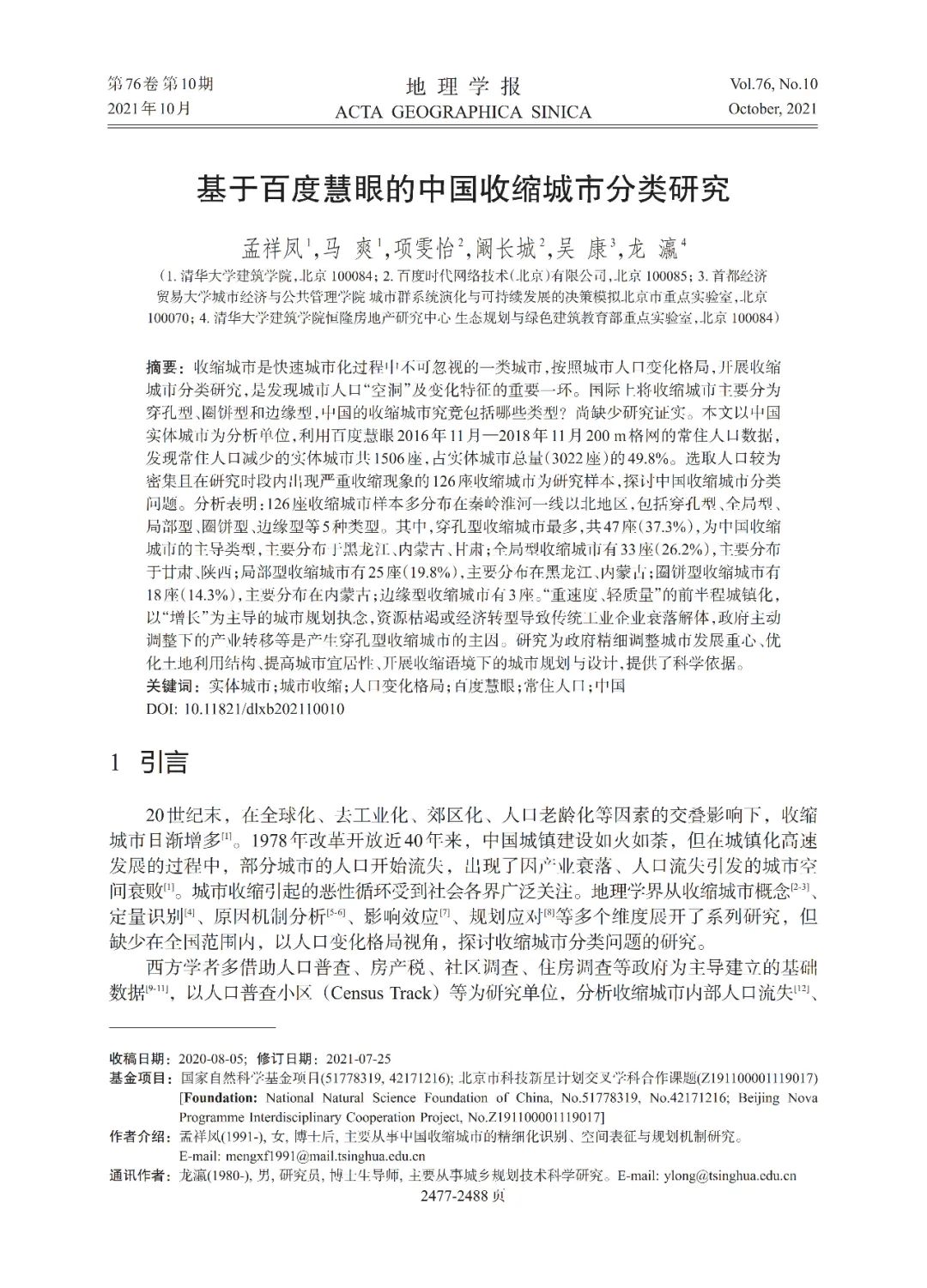
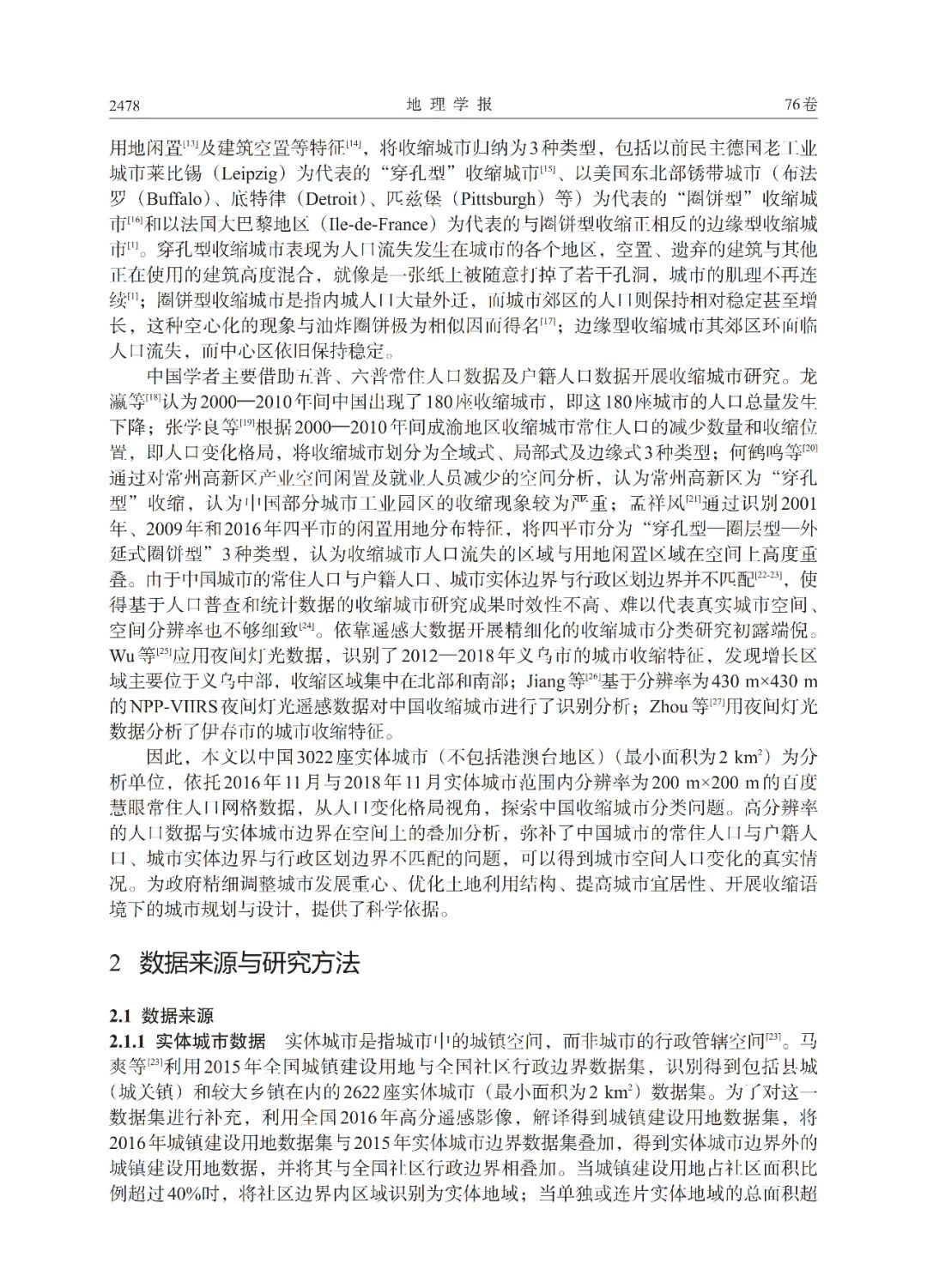
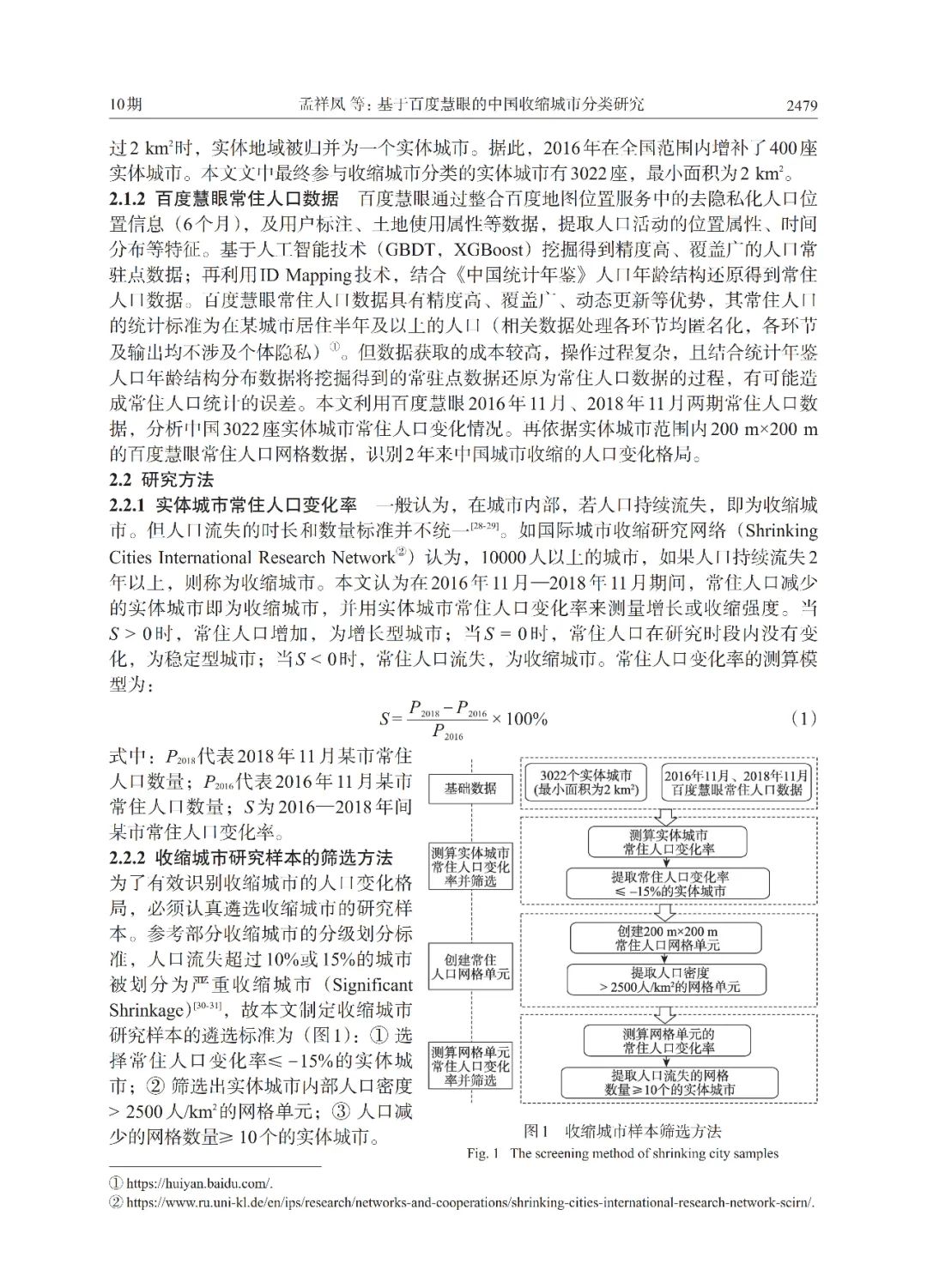
想要了解更多文章内容,请至浏览器搜索或点击文末“阅读原文”下载查看:
文章链接:
https://kns.cnki.net/kcms/detail/detail.aspx?dbcode=CJFD&dbname=CJFDAUTO&filename=DLXB202110011&uniplatform=NZKPT&v=TknXr7BXGCsBb31y6T6HVC5J-9XF6Z-UhNMJMTZ7_7c2ok46DOc8qywwXO7IcnTb
文章DOI:
10.11821/dlxb202110010
更多内容,请点击微信下方菜单即可查询。
请搜索微信号“Beijingcitylab”关注。
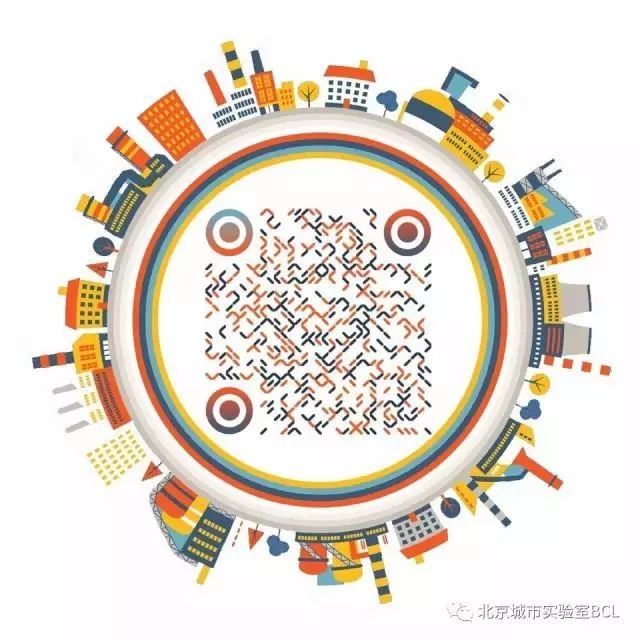
Email:BeijingCityLab@gmail.com
Emaillist: BCL@freelist.org
新浪微博:北京城市实验室BCL
微信号:beijingcitylab
网址: http://www.beijingcitylab.com
责任编辑:孟庆祥
原文始发于微信公众号(北京城市实验室BCL):文章推荐 | 基于百度慧眼的中国收缩城市分类研究
 规划问道
规划问道

![国际资讯 | [中东]阿曼塞拉莱滨水区重塑总体规划/卡塔尔公共交通总体规划(2025.5)-规划问道](https://weixin.caupdcloud.com/wp-content/uploads/2025/05/frc-69b1f46a51c00c56ea0c6452271abf56-220x90.jpg)







